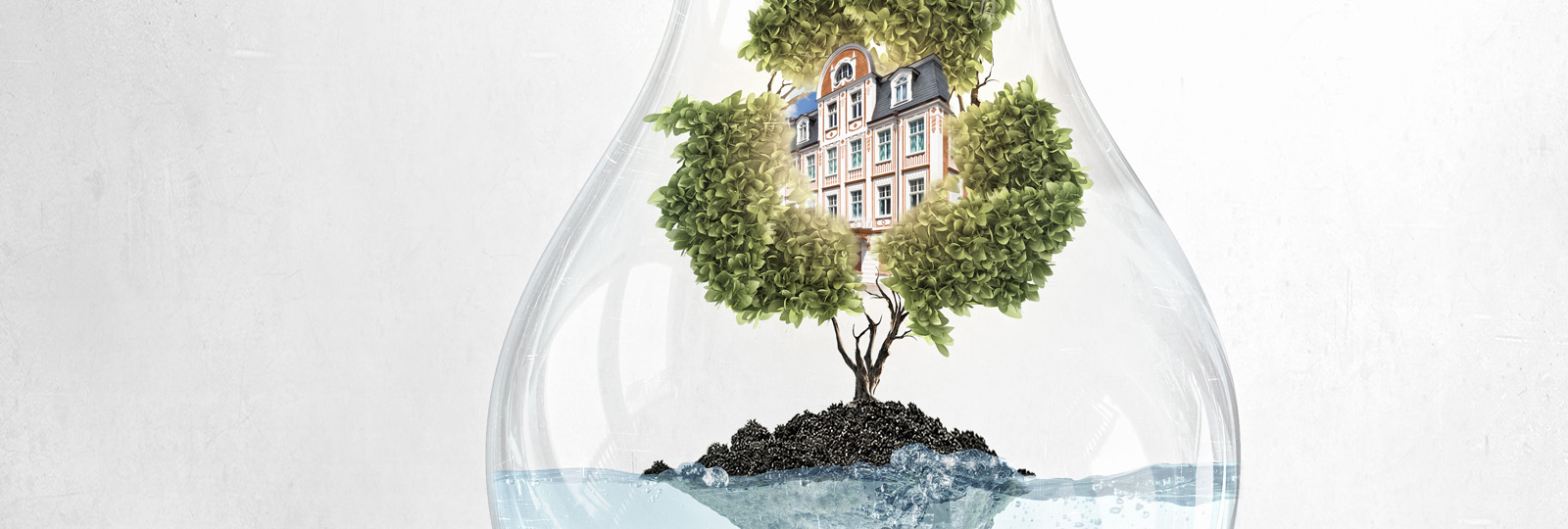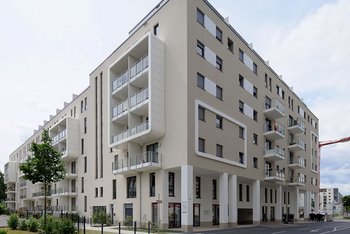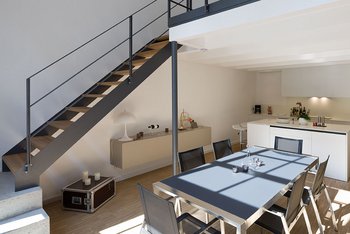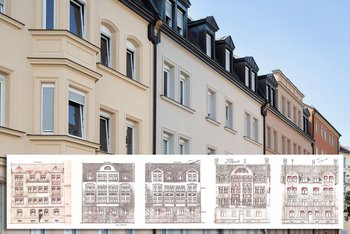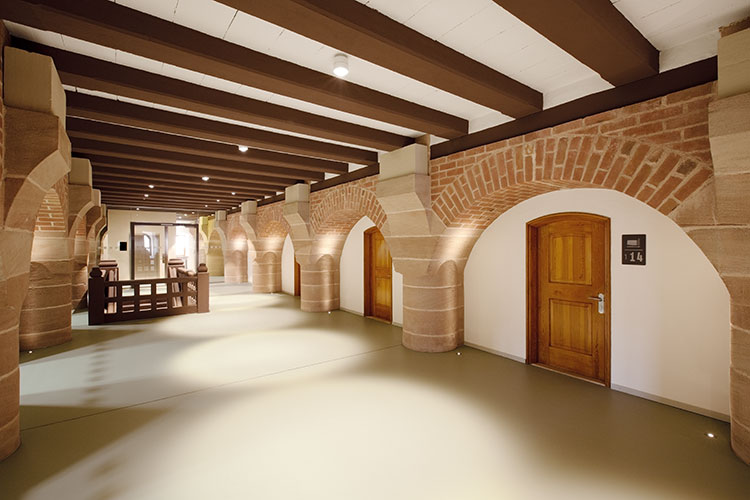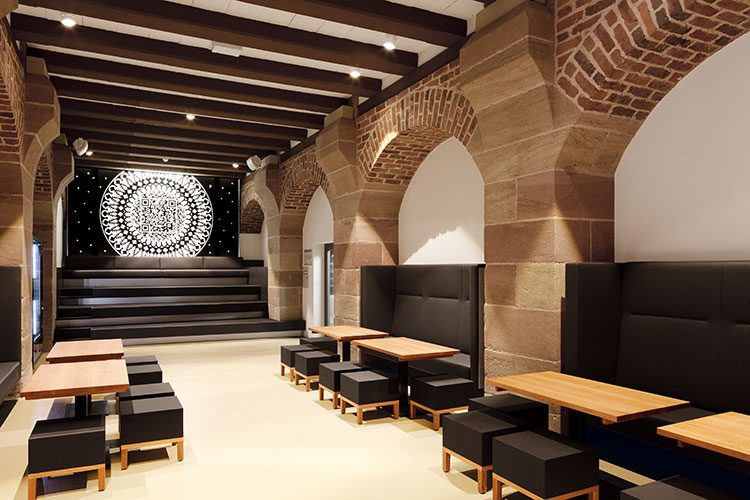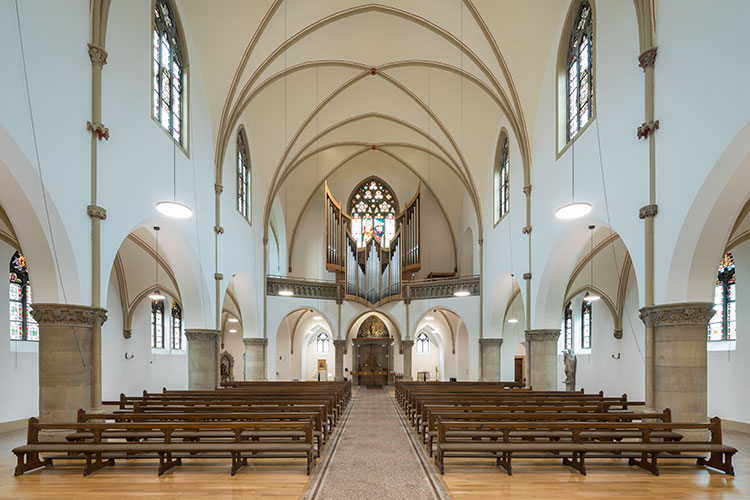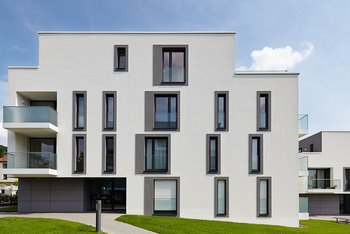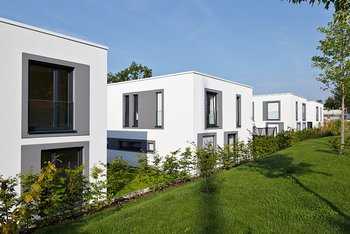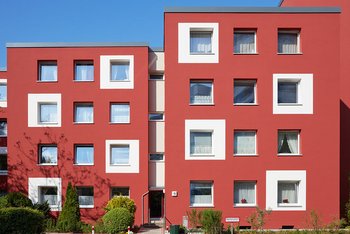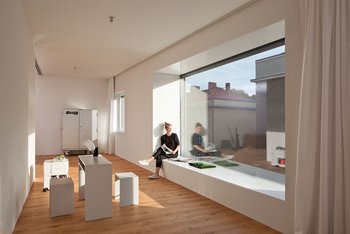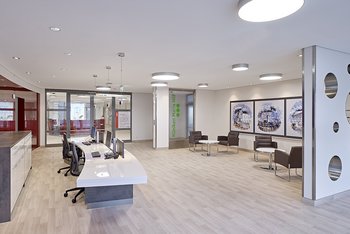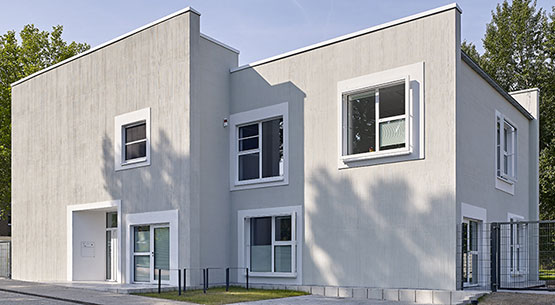The silicate system as an ecological alternative
Order the printed version via email at: kontakt@brillux.de
Cover image:104341674 Sergey Nivens © www.adobe.stock.com
Building sustainably means resources are handled efficiently, both in planning, as well as during construction and use, and optimizing the way that energy and raw materials are used. The choice of building materials therefore takes high priority, because selecting pollutant-free and long-lasting products also determines the environmental performance of a building. When it comes to coatings, the mineral silicate system is recommended, consisting of paints and plasters.
Silicate paints are alkaline coating materials based on potassium water glass. In the past, they were only produced with mineral pigments of natural origin, and hence are referred to as mineral paints. Silicate paints do not form a film or bond with the material substrate; instead, they form a chemical compound with it.
The result is a highly resistant connection between the coating and the substrate. The silificating process relates to the render layer or the upper layer of the coating substrate. The chemical connection with the substrate and the resulting UV stability thanks to the potassium water glass bonding agent are the key reasons behind silicate paints’ long service life.
The advantages of the silicate system:
- Long service life
- Highly water-vapor-permeable
- Prevents mold spores due to high alkalinity
- Free from preservatives
- High color fastness due to purely inorganic toning
The silicate system in historical monuments.
Due to their mostly mineral composition, silicate paints are ideal for use in historic buildings and protected monuments. Especially when used on lime-rich substrates, highly water-vapor-permeable coating materials should mostly be used in order to support the excellent physical properties of the substrate. Silicate paints such as Brillux Ultrasil produce a balanced water economy on the facade surface.
Good capacity for water vapor diffusion ensures that the moisture contained in the component can diffuse freely to the outside. The hydrophilic surface, in combination with the selection of raw materials, ensures that the external surfaces of the construction components remain free of condensate and that algae and mold cannot begin to form here. This ensures natural facade protection, without biocide additives. Through the use of Sol silicate, a balanced combination of high-quality silica sol and potassium water glass, the coating result is highly weather resistant and especially color stable, thanks to the quick curing.
Simultaneously, the coating is non-combustible (A2 – s1,d0 in accordance with DIN EN 13501). Even strong, dark shades are an option today using silicate paints. Brillux Extrasil facade paint based on silicate e.g., in combination with the TSR formula in the SolReflex System, makes coatings in intense color shades possible.
“As the remaining render was largely undamaged, it was possible to begin immediately with the coating build-up. However, in some places it was certainly challenging to adapt the reworking to the old render structure, to result in a homogeneous substrate. The coating, as per historic specifications, and the color shades mixed via the Brillux Color System, were both undertaken with a silicate base and in a highly opaque silicate facade paint.”
Hans Gradl, Brillux Technical Consultant in Nürnberg
Photo: Stefan Meyer, Berlin
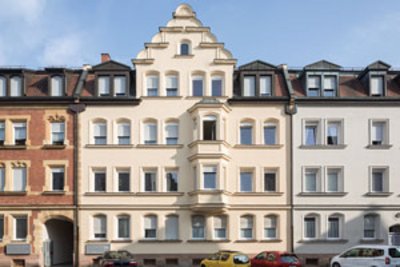
The silicate system in historic interiors
In old buildings, particularly historical ones, there are often different kinds of plaster substrates and old coatings. These differ in their composition and cannot be recoated using just any coating system.
Products must be selected that correspond to the properties of the substrates in order to prevent any damage formation. For gentle, professional renovations, first of all, a careful analysis of existing substrates and coatings must be undertaken. Only with precise knowledge of the material situation and the expert handling of the existing substrate is it possible to develop a suitable coating system.
Special product properties are in demand for the selected system. Here, the mineral composition to provide a homogeneous structure and very high diffusion capacity are vital – this also applies in interiors. And these are all areas where silicate coatings excel.
Silicate system for modern facades
Facade paints are not only suitable for building designs, but also make an important contribution to lasting value retention and protection of the building against weathering and environmental pollution. Moisture protection comes first, as moisture impacts are the main cause of damage to buildings.
To tackle air pollutants, such as exhaust gases (NO2 and SO2) or carbon dioxide (CO2), and the associated dangers when it comes to weakening buildings, facades also have to be protected. Silicate coatings, thanks to their characteristic mineral composition and chemical-physical curing, are especially durable. Moisture from the substrate can freely escape outside, thanks to the high level of water vapor permeability, while humidity from outside is absorbed, thanks to the properties of the hydrophilic coating.
The high alkalinity of potassium water glass increases the protection against contamination by microorganisms. The high light-fastness of the silicate paints is important for design, and even strong, intense color shades are possible, thanks to Brillux Extrasil. A further advantage of the silicate systems should not be forgotten: Mineral coatings pollute less, because the mineral bonding agents have less static charge and therefore hardly accumulate dust on the surface.
When renovating this Hamburg residential complex, the ABJ color concept came into play. Architects chose a strong shade of red for the energetically upgraded facades, that acts as a reminder of brick-red facades.
The intense red of the ETICS facade was made possible, thanks to the special IR-reflective color formulation in the SolReflexSystem. The mineral rendered facade was coated with silicate facade paints, in order to provide natural facade protection against algal and fungal attack, without any biocides.
The silicate system for healthy living rooms
In modern interior construction, the products used are increasingly tested for their environmental impact and biological suitability and then chosen accordingly. This above all affects any potential load on the room air from emissions, as well as the physical impact of the building materials on the indoor climate. Of course, this is particularly important in highly frequented or sensitive areas such as hospitals, kindergartens, and nursing homes.
Awareness of ecological responsibility is also increasing in the field of residential construction, where there is demand for sustainability. Silicate coatings are low in emissions as well as solvent and plasticizer-free. In the color shade white, all silicate paints are also preservative free. According to TÜV Nord criteria, Brillux Profisil interior paint is even suitable for allergy sufferers and is considered free of contaminants. Brillux Kalisil has even been awarded wet abrasion resistance class 1. Both products are, as is the case with all silicate paints, highly water-vapor-permeable.
This also applies to the Brillux Klimasil calcium silicate coating, a moisture-buffering fine render, which has a regulating effect on the climate in interiors, e.g., in bedrooms. Brillux Structosil is an emulsion silicate interior paint with a special pearling structure made from expanding glass, that has been specifically developed for ceiling areas. All these interior paints are non-combustible and classified in accordance with A2 – s1,d0 DIN EN 13501.
